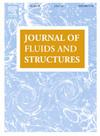Probability evaluation of blade flutter in a transonic compressor with inlet distortion using SSA-DBEN model
IF 3.4
2区 工程技术
Q1 ENGINEERING, MECHANICAL
引用次数: 0
Abstract
Inlet distortion significantly impacts the aeroelastic stability of aircraft engines, posing potential risks to their reliability and performance. Evaluating the probability of flutter in compressor blades is an effective approach to quantifying uncertain vibration characteristics and assessing blade aeroelastic stability. To improve modeling accuracy and computational efficiency in this analysis, a prediction method based on the sparrow search algorithm -deep extreme belief network (SSA-DEBN) model is proposed. The proposed method is evaluated through a case study involving the flutter probability assessment of a typical compressor rotor under inlet total pressure distortion. The results demonstrate that the aerodynamic modal damping ratio initially decreases and then increases as the wavelength of the inlet distortion decreases, reaching a minimum when the sinusoidal wave number of the distortion is two. Under inlet distortion conditions, the aerodynamic modal damping ratio of the compressor blade follows an approximate normal distribution, with a flutter reliability of 98.48 %. The primary factors influencing compressor blade flutter are rotational speed, inlet total temperature, vibration frequency, inlet total pressure, outlet static pressure, and distortion amplitude. The SSA-DEBN method has high accuracy and efficiency in the evaluation of compressor blade flutter failure mode by comparative analysis.
使用 SSA-DBEN 模型评估带有入口变形的跨音速压缩机叶片扑动的概率
进气道畸变严重影响航空发动机的气动弹性稳定性,对发动机的可靠性和性能构成潜在威胁。压气机叶片颤振概率评估是量化叶片不确定振动特性和评估叶片气动弹性稳定性的有效途径。为了提高建模精度和计算效率,提出了一种基于麻雀搜索算法的预测方法——深度极端信念网络(SSA-DEBN)模型。通过一个典型压气机转子在进口总压畸变下的颤振概率评估实例,对该方法进行了验证。结果表明:随着进口畸变波长的减小,气动模态阻尼比先减小后增大,当进口畸变正弦波数为2时达到最小值;在进气道畸变条件下,压气机叶片气动模态阻尼比近似服从正态分布,颤振可靠性为98.48%。影响压气机叶片颤振的主要因素有转速、进口总温度、振动频率、进口总压、出口静压和畸变幅值。对比分析表明,SSA-DEBN方法在压气机叶片颤振失效模式评估中具有较高的准确性和效率。
本文章由计算机程序翻译,如有差异,请以英文原文为准。
求助全文
约1分钟内获得全文
求助全文
来源期刊

Journal of Fluids and Structures
工程技术-工程:机械
CiteScore
6.90
自引率
8.30%
发文量
173
审稿时长
65 days
期刊介绍:
The Journal of Fluids and Structures serves as a focal point and a forum for the exchange of ideas, for the many kinds of specialists and practitioners concerned with fluid–structure interactions and the dynamics of systems related thereto, in any field. One of its aims is to foster the cross–fertilization of ideas, methods and techniques in the various disciplines involved.
The journal publishes papers that present original and significant contributions on all aspects of the mechanical interactions between fluids and solids, regardless of scale.
 求助内容:
求助内容: 应助结果提醒方式:
应助结果提醒方式:


